Colloquia for Fall 2014
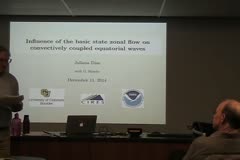
Influence of the Basic State Zonal Flow on Convectively Coupled Equatorial Waves
December 12, 2014
Juliana Dias
Hosted by Wayne Schubert and Thomas Birner
Convectively coupled equatorial waves (CCEWs) represent the leading modes of synoptic scale organized convection in the tropical troposphere and they are known to affect weather in both the tropics and midlatitudes. Despite their prominence in the observations, CCEWs are poorly represented in current general circulation models used to predict weather and climate. Because of their implied level…
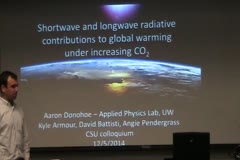
Shortwave and longwave radiative contributions to global warming under increasing CO2
December 05, 2014
Aaron Donohoe
Hosted by Libby Barnes
In response to increasing concentrations of atmospheric CO2, high-end general circulation models (GCMs) simulate an accumulation of energy at the top-of-the-atmosphere not through a reduction in out-going longwave radiation (OLR) as one might expect from green-house gas forcing but through an enhancement of net absorbed solar radiation (ASR). A simple linear radiative feedback framework is used…
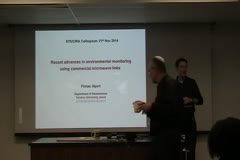
Recent advances in environmental monitoring using commercial microwave links
November 21, 2014
Pinhas Alpert
Hosted by Chandra
The propagation of electromagnetic radiation in the lower atmosphere, at centimeter wavelengths, is impaired by atmospheric conditions. Absorption and scattering of the radiation, at frequencies of tens of GHz, are directly related to the atmospheric phenomena, primarily precipitation, oxygen, mist, fog and water vapor. As was recently shown, wireless communication networks supply high…
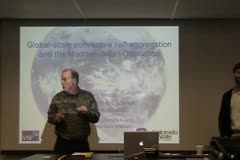
Global-scale convective self-aggregation and the Madden-Julian oscillation
November 14, 2014
Nathan Arnold
Hosted by Dave Randall
The Madden-Julian Oscillation is the dominant mode of tropical intraseasonal variability, but exactly why it occurs remains poorly understood. In the first half of this talk I will argue that the MJO is a large scale consequence of a tendency for convection to self-aggregate. Simulations with a super-parameterized model of a non-rotating atmosphere with uniform boundary conditions show that…
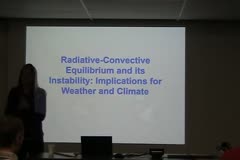
Radiative-Convective Equilibrium and its Instability: Implications for Weather and Climate
November 07, 2014
Kerry Emanuel
Hosted by Sue van den Heever
The concept of radiative-convective equilibrium (RCE) is the simplest and arguably the most elegant model of a climate system, regarding it as a statistically one-dimensional balance between radiative and convective heat transfer. In spite of this, RCE is seldom studied and poorly understood today. Recent advances in cloud-system-resolving numerical models have made it possible to explicitly…
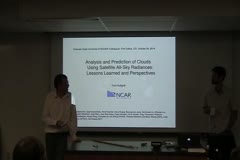
Analysis and Prediction of Clouds using Satellite All-Sky Radiances: Lessons Learned and Perspectives
October 24, 2014
Tom Auligne
Hosted by Chris O'Dell
The initialization of cloud parameters is one of the main frontiers for improving short-term prediction skills in numerical weather prediction (NWP) models. We will present the latest developments at the National Center for Atmospheric Research (NCAR) in building a capability to accurately initialize cloud parameters based on all-sky satellite observations assimilated in the Weather Research…
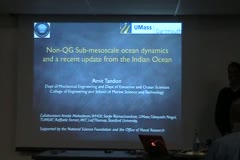
Non-QG Sub-mesoscale ocean dynamics and a recent update from the Indian Ocean
October 17, 2014
Amit Tandon
Hosted by Thomas Birner
Increased resolution in modeling and in observations in the ocean have revealed rich dynamics at O(km) lateral scales in the ocean associated with O(1) Rossby and Richardson numbers. These sub-mesoscale oceanic processes are very different from the quasi-geostrophic dynamics at the large scale and the isotropic mixing at the small scales. They are important in the upper ocean frontal regions…
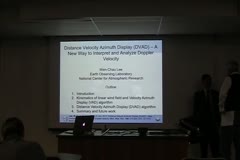
Distance Velocity Azimuth Display (DVAD) - New Interpretation and Analysis of Doppler Velocity
October 03, 2014
Wen-Chau Lee
Hosted by Wayne Schubert
The concept and mathematic framework of the Distance Velocity Azimuth Display (DVAD) methodology is presented. DVAD uses rVd (Doppler velocity scaled by the distance from the radar to a gate, r) as the basis to display, interpret and extract information from single Doppler radar observations. Both linear and non-linear wind fields can be represented by the same Cartesian…
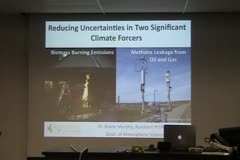
Reducing Uncertainties in Two Significant Climate Forcers: Biomass Burning Emissions and Methane Leakage from Oil and Gas
September 26, 2014
Dr. Shane Murphy
Hosted by Jeff Pierce and Emily Fischer
The leakage rate from new oil and gas development in the U.S. is currently a matter of intense debate because the leakage rate affects how beneficial, from a climate perspective, switching from coal to natural gas is. Black carbon, for which biomass burning is the largest global source, is thought to be one of the most important anthropogenic emissions for heating the climate, perhaps second…
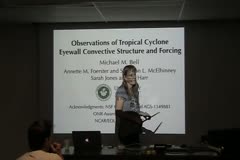
Observations of Tropical Cyclone Eyewall Convective Structure and Forcing
September 19, 2014
Michael Bell
Hosted by Sue van den Heever
Tropical cyclone (TC) eyewall convection plays a critical role in intensity change. Recent studies have suggested that the radial location of eyewall convection relative to the radius of maximum wind is an important component of intensification efficiency. However, our understanding of the physical processes that determine the location and strength of eyewall convection is still incomplete.…
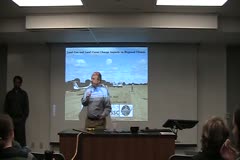
Land-Use and Land-Cover Change Impacts on Regional Climate
September 12, 2014
Udaysankar Nair
Hosted by Jeff Collett
Land-Use and Land-Cover (LULC) change is a forcing factor that is of importance to regional climate. However, LULC change impacts exhibit substantial geographical variation and complex interactions with other forcing factors. This talk will focus on LULC change process studies (observational and numerical modeling analysis) in a variety of settings including isolated mountain in the tropics…
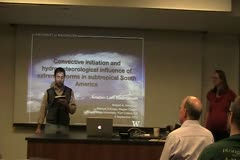
Convective initiation and hydrometeorological influence of extreme storms in subtropical South America
September 05, 2014
Kristen L. Rasmussen
Hosted by Libby Barnes
Extreme convection tends to form in the vicinity of mountain ranges, and the Andes in subtropical South America help spawn some of the most intense convection in the world. An investigation of the most intense storms for 11 years of TRMM Precipitation Radar (PR) data shows a tendency for squall lines to initiate and develop in this region with the canonical leading convective line/trailing…
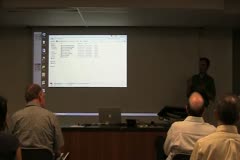
Faculty-Intro Jamboree Part I
August 29, 2014
Profs. Barnes, Birner, Fischer, Johnson, O'Dell, Pierce, Randall, Schumacher, Vonder Haar
Hosted by Russ Schumacher
N/A
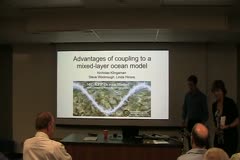
The Benefits of Coupling to a Mixed-Layer Ocean for Global Climate Simulations
August 27, 2014
Nicholas Klingaman
Hosted by Charlotte DeMott
Prescribing sea-surface temperatures (SSTs) in atmosphere-only model simulations is known to produce erroneous relationships between SSTs, surface fluxes and precipitation. These errors cause biases in representations of the mean climate and its variability, particularly in the tropics. Simulations in which atmospheric models are coupled to dynamical ocean models, however, also suffer from…
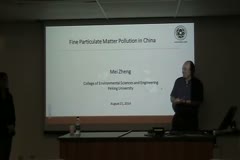
Fine particulate matter in China: current understanding and challenges
August 21, 2014
Professor Mei Zheng (visiting ATS from Peking University)
Hosted by Jeff Collett
none given
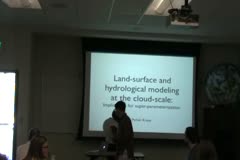
Land-surface and hydrological modeling at the cloud-scale, implications for super-parameterization
August 04, 2014
Parker Kraus, Colorado State University
Hosted by CMMAP
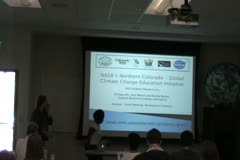
NASA's Northern Colorado Global Climate Change Education Initiative
August 04, 2014
Renee Curry, Colorado State University
Hosted by CMMAP
